 We spotted the Lapka prototype last year and the concept intrigued us. After furthur development it went into production and found its way onto our desk. It aims to guide us better to understand and evaluate the world around us, by being a personal environment monitor. But the question really lies as to whether this knowledge is beneficial or a novelty that loses interest?
We spotted the Lapka prototype last year and the concept intrigued us. After furthur development it went into production and found its way onto our desk. It aims to guide us better to understand and evaluate the world around us, by being a personal environment monitor. But the question really lies as to whether this knowledge is beneficial or a novelty that loses interest?
The Lapka may be desired by many but its retail price makes for quite an investment at £249.95 within the UK. We expect to see the price fall as the product begins to peg itself into the market. Some early adopters may just want to play around with this marvel, but there are definitely people out there who will probably find this package life saving and feel the launch price well worth the investment.
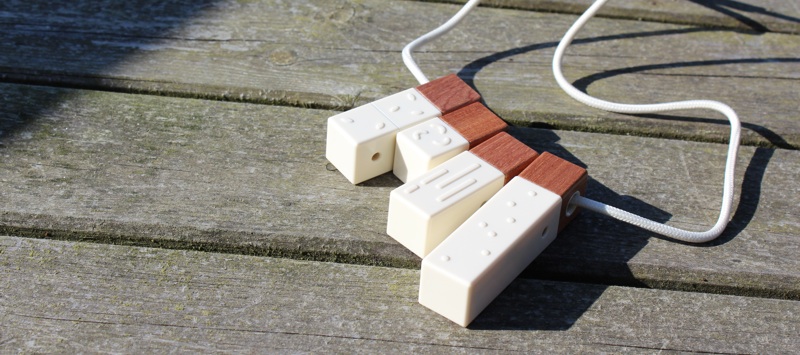 So what exactly are we getting here? Well, the Lapka comes in four intriguingly simplistic water resistant rectangular cuboids, all of which are creamy white in colour and topped with real wooden bricks. The wooden bricks each have a hole through them, allowing the cable to be optionally threaded through all to group in one place for neatness and convenience. Those with large keyrings may also find you can equip parts of the Lapka onto it through the holes. A carry bag is also supplied for added convenience too. The Lapka system is currently exclusively compatible with iOS and a Lapka App is needed from the App Store to use the product, so the iPhone 3GS and up, iPod touch 3rd generation and up and all iPad models are compatible. The information is fed into an iOS device via a chorded cable which plugs into the devices auxiliary input.
So what exactly are we getting here? Well, the Lapka comes in four intriguingly simplistic water resistant rectangular cuboids, all of which are creamy white in colour and topped with real wooden bricks. The wooden bricks each have a hole through them, allowing the cable to be optionally threaded through all to group in one place for neatness and convenience. Those with large keyrings may also find you can equip parts of the Lapka onto it through the holes. A carry bag is also supplied for added convenience too. The Lapka system is currently exclusively compatible with iOS and a Lapka App is needed from the App Store to use the product, so the iPhone 3GS and up, iPod touch 3rd generation and up and all iPad models are compatible. The information is fed into an iOS device via a chorded cable which plugs into the devices auxiliary input.
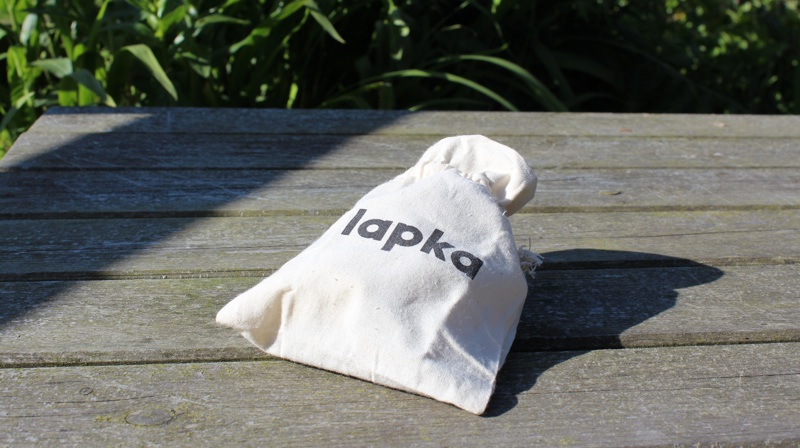 Each cuboid serves a different purpose: monitoring radiation, monitoring how organic food is, monitoring EMF frequencies and monitoring humidity and temperature. They're distinguished via imprinted symbols on each, relating to what they monitor. We have extensively used all four elements, mostly in a normal home-like environment with some extra exploring for good measure, and have to say the new perspective of the world around us is very interesting.
Each cuboid serves a different purpose: monitoring radiation, monitoring how organic food is, monitoring EMF frequencies and monitoring humidity and temperature. They're distinguished via imprinted symbols on each, relating to what they monitor. We have extensively used all four elements, mostly in a normal home-like environment with some extra exploring for good measure, and have to say the new perspective of the world around us is very interesting.
 So let's start by talking about the Lapka organic. This measures how much nitrate nitrogen from synthetic fertilizers is within any piece of fruit or vegetable; 15 available fruit and veg are currently found within the Apps preset list, more presets will be added with App updates. It's the only Lapka module which has a removable cap to expose its probe which is inserted into any fruit or vegetable in order to obtain a reading. Most of the fruit and vegetables we examined with the Lapka were apparently organic and we were told that most of them contained very little if not zero amounts of nitrate nitrogen. This was one of the Lapka’s we found ourselves using more regularly than the others. However, we’re too embarrassed to take this around a shop and poke it into every piece of fruit or veg in sight, so we stick to checking if organic produce really is organic. This seems to feel somewhat justifiable.
So let's start by talking about the Lapka organic. This measures how much nitrate nitrogen from synthetic fertilizers is within any piece of fruit or vegetable; 15 available fruit and veg are currently found within the Apps preset list, more presets will be added with App updates. It's the only Lapka module which has a removable cap to expose its probe which is inserted into any fruit or vegetable in order to obtain a reading. Most of the fruit and vegetables we examined with the Lapka were apparently organic and we were told that most of them contained very little if not zero amounts of nitrate nitrogen. This was one of the Lapka’s we found ourselves using more regularly than the others. However, we’re too embarrassed to take this around a shop and poke it into every piece of fruit or veg in sight, so we stick to checking if organic produce really is organic. This seems to feel somewhat justifiable.
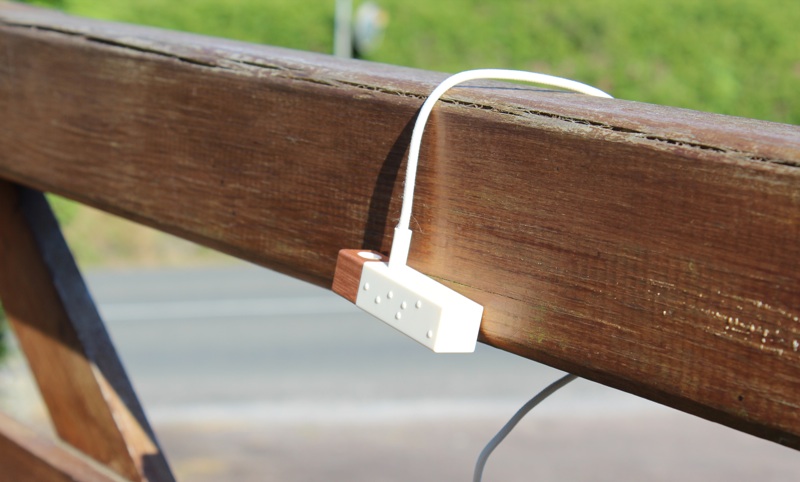 The radiation Lapka is the longest one within the set. It detects the level of radiation within an area and forms a result based on the selected area preset from the App. One of the abilities of this that caught our eyes immediately was to choose to detect if an area contains a safe degree of radiation for a baby. Additionally you can choose to scan a home, airplane or a more general daily (details maximum level of safe radiation per day) preset, more preset environments will be enabled with App updates. We tested the radiation levels within our studio and Lapka approved of the results found. However, what was rather concerning is that Lapka reported an alarming degree of radiation within our local town, far too high to be safe with babies or humans from long durations of exposure according to the Lapka App. We generally ran this Lapka for longer than two minutes, to acquire a more accurate reading.
The radiation Lapka is the longest one within the set. It detects the level of radiation within an area and forms a result based on the selected area preset from the App. One of the abilities of this that caught our eyes immediately was to choose to detect if an area contains a safe degree of radiation for a baby. Additionally you can choose to scan a home, airplane or a more general daily (details maximum level of safe radiation per day) preset, more preset environments will be enabled with App updates. We tested the radiation levels within our studio and Lapka approved of the results found. However, what was rather concerning is that Lapka reported an alarming degree of radiation within our local town, far too high to be safe with babies or humans from long durations of exposure according to the Lapka App. We generally ran this Lapka for longer than two minutes, to acquire a more accurate reading.
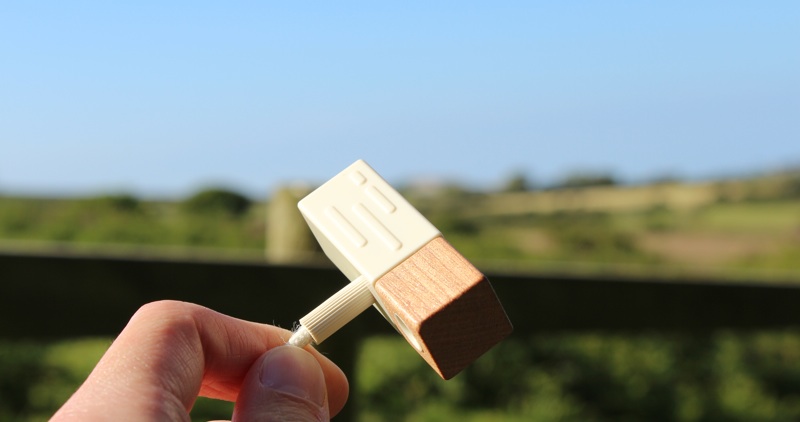 EMF for those unaware, stands for electromagnetic fields, and this basically measures high and low frequency fields. Apparently the higher frequency waves come from smartphones, microwaves, old-school light bulbs and similar items. The lower frequencies transmit from things like chargers, energy saving lights, electrical appliances, etc. This is the Lapka we found ourselves using the least, there’s no doubt that high electromagnetic fields could be described as pollution, but the evidence of health problems caused directly from this is still firmly on the fence. Regardless, it does work even if the knowledge gained is questionably useful.
EMF for those unaware, stands for electromagnetic fields, and this basically measures high and low frequency fields. Apparently the higher frequency waves come from smartphones, microwaves, old-school light bulbs and similar items. The lower frequencies transmit from things like chargers, energy saving lights, electrical appliances, etc. This is the Lapka we found ourselves using the least, there’s no doubt that high electromagnetic fields could be described as pollution, but the evidence of health problems caused directly from this is still firmly on the fence. Regardless, it does work even if the knowledge gained is questionably useful.
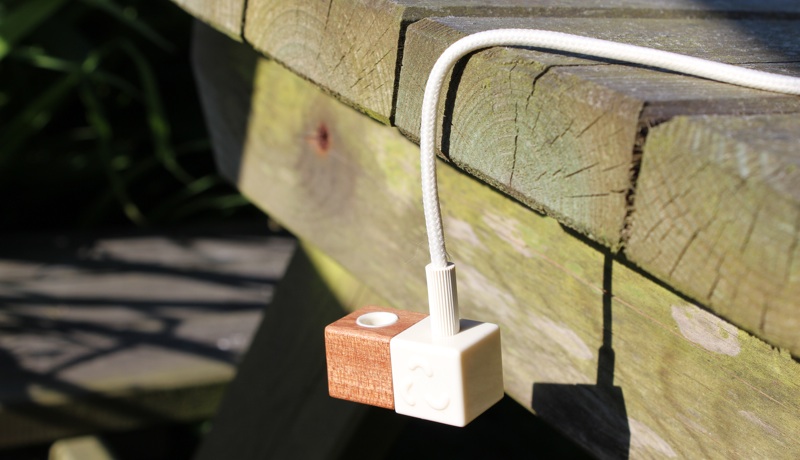 The final Lapka to discuss has two uses. The first being able to report the humidity within its environment and the second is its ability to report the temperature. This is the Lapka which holds the least amount of mystery but is non-the-less useful. We’ve used it quite a bit over the lengthy hot summer weeks we’ve been experiencing recently and the temperatures and humidity levels reported contradict the official weather forecasts. This is probably because our studio is very high up, so the distance from the sun is less than that of the area we’re based within.
The final Lapka to discuss has two uses. The first being able to report the humidity within its environment and the second is its ability to report the temperature. This is the Lapka which holds the least amount of mystery but is non-the-less useful. We’ve used it quite a bit over the lengthy hot summer weeks we’ve been experiencing recently and the temperatures and humidity levels reported contradict the official weather forecasts. This is probably because our studio is very high up, so the distance from the sun is less than that of the area we’re based within.
Generally when using the Lapka we did feel that having to switch between modules was a little bit of a chore, in no way is this difficult to do but for convenience we'd have preferred an all-in-one approach. Having said this the science and technology behind each module may be difficult to combine or not be compatible together, but we used each module when they were threaded next to each other on the chorded cable and there were no issues with them being in such close proximity. One of the true beauties of Lapka is that it doesn’t require any batteries, the power source is the phone or tablet.
 The App is very easy to use and what we really liked was that the readings given were always explained to us whether they were good or bad via a a green tick or a red cross; universal communication symbols. We weren't required to research and find out what the readings given actually meant, because all the detail of measurements is provided. The App is charmingly designed and a breeze to navigate and the design compliments the Lapka’s perfectly. The only thing we did feel about the App is that it could be a little more creative in the use of the data it has saved.
The App is very easy to use and what we really liked was that the readings given were always explained to us whether they were good or bad via a a green tick or a red cross; universal communication symbols. We weren't required to research and find out what the readings given actually meant, because all the detail of measurements is provided. The App is charmingly designed and a breeze to navigate and the design compliments the Lapka’s perfectly. The only thing we did feel about the App is that it could be a little more creative in the use of the data it has saved.
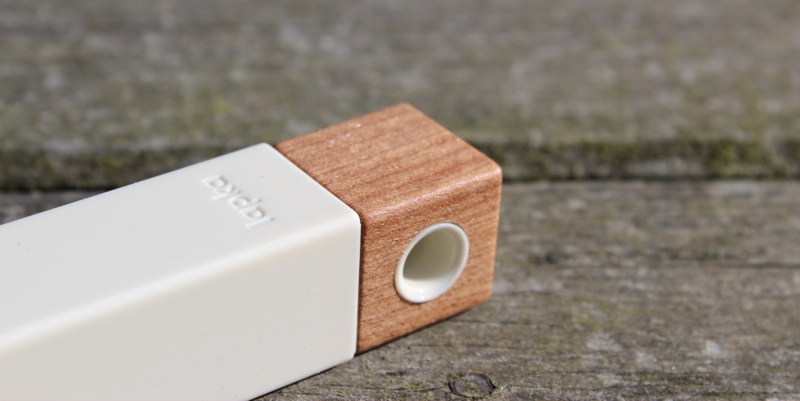 To sum up Lapka, it allows all of us with an iOS device to peel back and inspect the environment surrounding us daily, and accomplishes such complex tasks in a simplistic and humble manner, which has to be commended.
To sum up Lapka, it allows all of us with an iOS device to peel back and inspect the environment surrounding us daily, and accomplishes such complex tasks in a simplistic and humble manner, which has to be commended.


